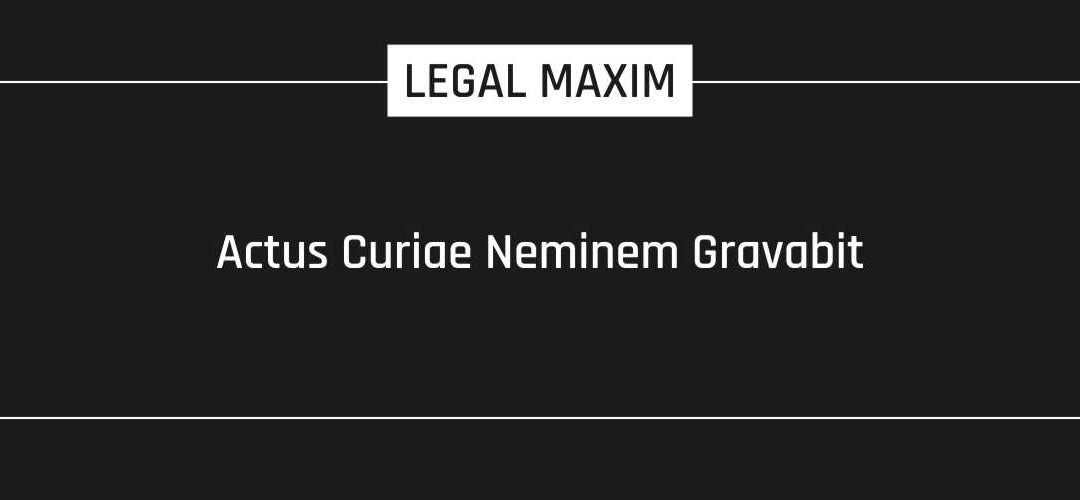Literal Meaning
An Act of the Court shall prejudice no man
Origin
Latin
Explanation
The maxim refers to that an act of the Court shall prejudice no one. It is applicable when a situation is projected where the Court is under an obligation to undo the wrong done to a party by the act of the Court. According to the maxim, if in a case, any undeserved or unfair advantage has been gained by a party invoking the jurisdiction of the Court, the same requires to be neutralized. This principle has been held to be fundamental to the system of justice and application to Indian Jurisprudence – that no man should suffer because of the fault of the court or delay in the procedure. It is the bounden duty of a court to see that if a person is harmed by mistake of the court, he should be restored to the position he would have occupied but for that mistake. Every order should be passed to afford a safe and certain guide for the administration of justice.
Case Laws
In Dhanani Shoes Ltd. Vs. State of Assam and ors., the court held that “The words ‘sufficient reason’ in Order 47, Rule 1 of the Code is wide enough to include a misconception of fact or law by a court or even an advocate. An application for review may be necessitated by way of invoking the doctrine ‘actus curiae neminem gravabit’.”
In B.K. Office Needs Private Limited Vs. Divya Shakthi Granites Limited, Hyd., the court observed that “The principle underlying the maxim ‘actus curiae neminem gravabit’ is that the act of Court should harm no one. The said maxim is founded upon the principle of justice and good conscience. Explaining the maxim, the Courts have held that where an error was committed by the Court the same must be undone by the Court and the blame cannot be shifted to the party who was expected to rely upon the Court and its officers and to act in accordance with their directions.”

A very good judgement for justice seekers.